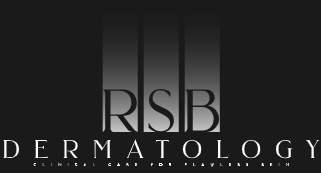What is the treatment for skin cancer?

Skin Cancer Types and Treatment
There are hundreds of different types of skin cancer, although most know only the three most common types: basal cell carcinoma, squamous cell carcinoma, and malignant melanoma.
In addition, there are sometimes different types of a particular cancer. For example, there is superficial basal cell carcinoma, nodular basal cell carcinoma, micronodular basal cell carcinoma, cystic basal cell carcinoma, infiltrative basal cell carcinoma, sclerotic basal cell carcinoma, and morpheaform basal cell carcinoma. Each type of basal cell carcinoma has different cure rates with the different treatment options.
In short, there is no single treatment option that is best for all different types of cancer. Both surgical and non-surgical options exist for "most" skin cancer, but the cure rates vary between them.
All of this will be discussed at the time of your consultation. We will look at all of the available treatment options, what to expect after treatment, and the cure rates. That way you can choose a treatment that is best FOR YOU--that meets the most important criteria for you.
For example, some patients want a treatment with the highest cure rate, another want the least amount of after care, another may only want to explore non-surgical options. Whatever the case is for you, we will devise a plan that is best for you.
What is the best treatment for skin cancer?
In order to know what treatment option is best, we must look at the exact pathology, which includes the kind of cancer along with other vital information depending upon the type of cancer, the location of the tumor, the depth of invasion, and several other factors. In short, this requires expertise and someone who can explain the different options that are available, including the risks, benefits, expected cure rates, and what to expect both during and after treatment. The goal of this discussion is to inform you of all of your options so that you can choose what is best for you, based on your own criteria of what is most important to you.
Which Treatment has the Highest Cure Rate for Skin Cancer?
For most common skin cancers, Mohs' micrographic surgery has the highest cure rate of approximately 99% followed by radiation of approximately 97%. For melanoma, Mohs' surgery has the lowest risk of local recurrence followed by excision.
Are there non-surgical treatments for skin cancer?
Sometimes. Again, we must look at several factors including: patient age, patient health, other health problems, medications, patient preferences, and the exact pathology--what type of tumor and sometimes some other critical information. As some patients do not want surgery under any condition, we can explore non-surgical options in detail, in addition to understanding the pros and cons to surgery for a basis of comparison. Some tumors may respond to a topical cream treatment, some to PDT, and others may opt for radiation.
Do I have to treat my skin cancer?
There are several factors that must be looked at when one decides NOT to treat their skin cancer including: the patient's age, the patient's overall health and life expectancy, the aggressiveness of the tumor (how life threatening it is), how fast growing the tumor is, how likely the tumor is to spread, etc. In short, there isn't a simple yes/no answer, but all of these factors must be taken into account and discussed so that you can make an informed decision about what to do, or what NOT to do.
Common Skin Cancer Treatments
Below are some of the most common treatment methods used to treat skin cancers. Click on one of them for more information.
